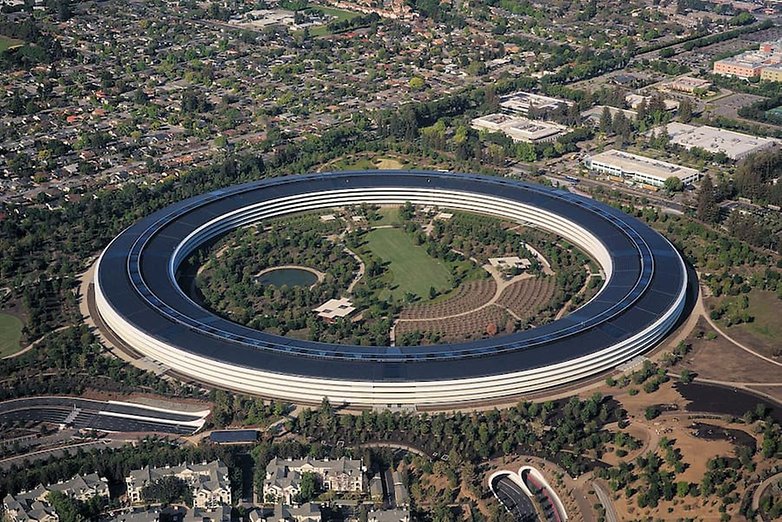The iPhone SE 2020 will be a barometer for the future smartphone market


Read in other languages:
Apple's flagship products have become emblems of globalization and how it works. Their design, manufacture, assembly and distribution bear witness to the organizational logic of the global economic space as well as the inequalities in development and wealth around the world. At a time when the current economic system is being called into question, Cupertino has just launched the mythical iPhone SE 2020. Let me explain why this smartphone embodies the economic-marketing world we live in, and ask the question about what might or might not happen.
At first glance, the new iPhone SE would appear to be an offshoot of Silicon Valley, the leading industrial hub of the United States and the world. It would be the latest creation of a flagship brand located in a space that brings together high-tech companies, research centers, and universities. As such, this model would be a creation straight out of Apple's brain, whose brand new headquarters, "The Ring", embodies a sort of flying saucer symbolizing its power and philosophy.
In fact, this new smartphone that everyone has been talking about is largely produced outside its country of origin. Around 90 percent of the hundreds of parts that compose it are manufactured abroad: the latest generation semiconductors come from Germany and Taiwan, the is memory from South Korea and Japan, displays and circuits are from South Korea and Taiwan, rare metals from Africa and Asia, steel from Russia... These elements are then assembled in China by the Taiwanese company Foxconn. Only the processor is made entirely in America.

Apple takes advantage of the global division of labor and the resources offered by each region of the world. For example, the company uses low-cost raw materials from the poorest countries, Korean technological know-how and, above all, Chinese labor. The key to success: a diversification of suppliers and supply chains, but above all an industrial strategy relocated to Zhengzhou in Henan province, the 'Apple City' where Foxconn employs nearly 300,000 workers.
So far, nothing surprising for tech-savvy readers. But the question is: what will be consumers' attitude towards a product, albeit a quality product like the iPhone SE 2020, be when it is one that embodies a globalized system that has just exploded in our faces with the COVID-19 pandemic? Of course, there will always be people who will say that nothing will change with regard to the $400 that the iPhone costs or even that marketing will always prevail over reason. But are we sure that nothing will change?
In any case, it seems obvious that things are going to have to change, because companies and people are now aware of the risks they were taking. If you suffer from epilepsy in France, for example, you will understand that the issue of export dependency goes far beyond the problem of choosing your next smartphone. For Professor Richard Portes, professor of economics at the London Business School, you just have to look at trade:
Once the supply chains were disrupted [by the coronavirus], people started looking for alternative suppliers, even if they were more expensive.

The whole system, as well as Apple's low-cost price of $399, is based on an organization of production that is held together by the multiplication of flows of all kinds on a global scale (financial, raw materials, industrial products, capital, information, etc.). Like the other products of the brand (but also all the products of Apple's competitors), the profits are explained by lower production costs in China, which are favored by lower transport costs and the speed of maritime exchanges.
Now that we are about to pre-order the iPhone SE (I include myself), we know that Apple will use cargo planes and then ground transportation to get the phones to the stores in a few days. But what will happen in the coming months with the crisis in the aeronautics sector and the uncertainty about trade? It's a good question because if production costs rise for Apple, the brand will not be able to lower the salaries of its Chinese employees unless it further erodes its image as hardship and unemployment take their toll.
The question of production costs can therefore only be solved by marketing. Fortunately for Cupertino, this is an area where the company has been a reference for more than forty years. As a reminder, a recent study published in the United States and focusing on American teenagers proves that no less than 85 percent of young people own an iPhone and swear by Apple. On this side, the brand does not have to worry. These young people don't care about economic issues and explanations like the ones I'm trying to set out in this article. Now, what will be the attitude of adults? Will they be able to resist this "brand image" cultivated for many years that associates iPhones with success or being connected?
In any case, the year is shaping up to be a decisive one for Apple. It is not yet known what impact the COVID-19 crisis will have on smartphone purchases. Initial studies show that smartphones have been abandoned in the United States in favor of other media. But that's because of the confinement and having a computer or iPad/Android tablet nearby at home. We will follow with attention what will happen in the coming months. The success or not of the iPhone SE will be an excellent barometer to see what will happen to the smartphone market in 2020 and 2021.














Agree with Marco. We only have to look back a week to the "never settle" company and the pricing of their new phones....... just my two pfennig
-
Admin
Apr 21, 2020 Link to commentI beg to differ. What makes the difference is not lower production costs but the fact that there is no more space for a greedy race upwards of the prices. The only viable solution is lower prices and more sales. In turn this will force some competitors out of the market.